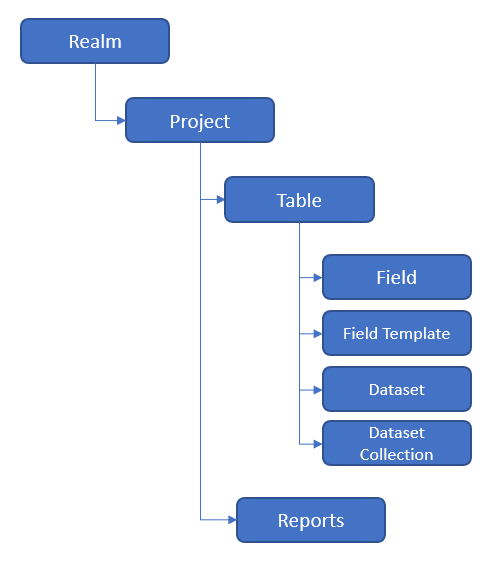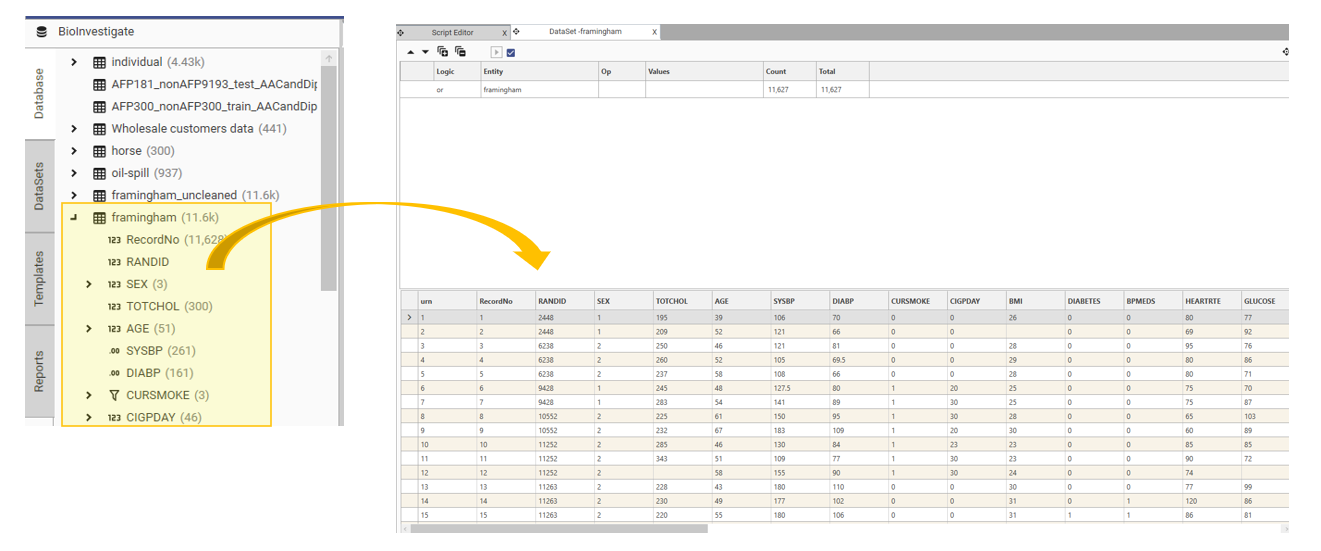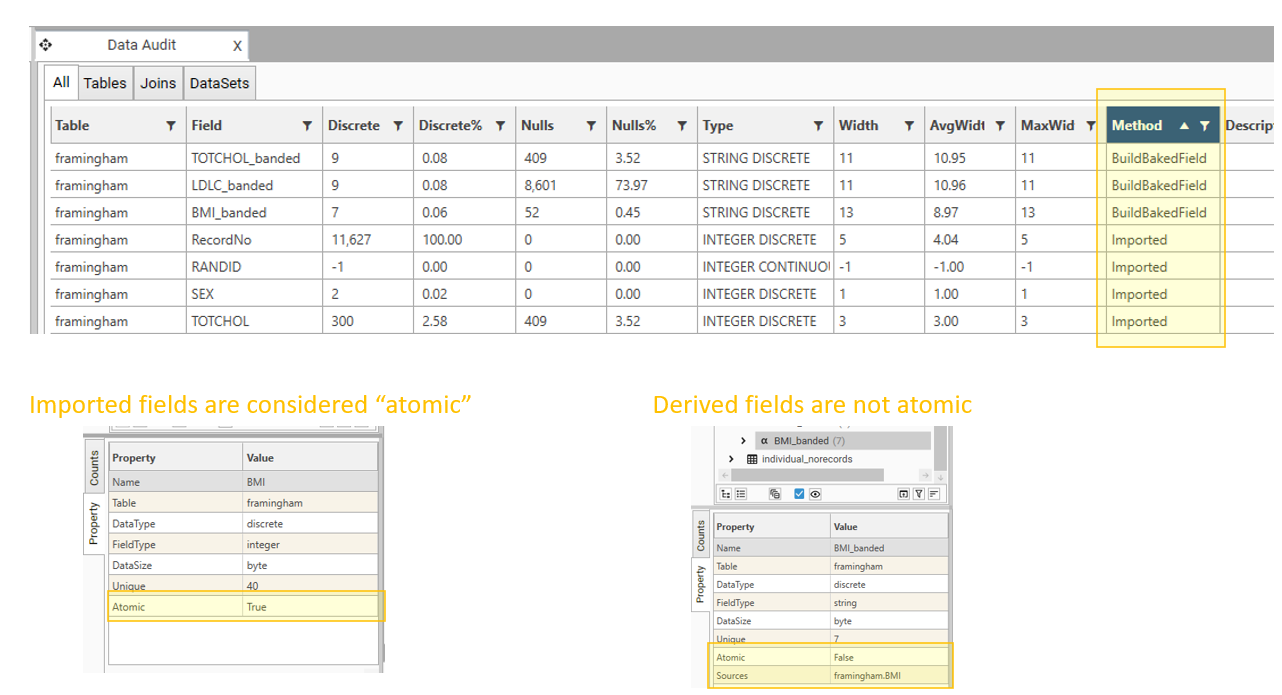As an analytical database, all data that is loaded into DataJet persists in a fixed structure unless explicitly modified or deleted. By design it is not possible to change data that has been loaded into DataJet, but it is possible to transform it extensively, and choose to hide or delete source data through various engineering capabilities.
DataJet's Data Structure is as follows:

Tables
A DataJet table is a set of records and fields, organised in a tabular form with columns and rows:
Tables are accessed via the Project Explorer and can be interacted with in a variety of ways:
Tables are created using the following approaches:
Tables consist of fields and records:
- New fields (or columns) can be added to a table via Data Engineering.
- Records can be appended to tables in some circumstances via Data Append (See ExportIntoTable) - it is not possible to edit loaded data.
Fields
Fields can be classified by the following groupings:
- Data Type
- String
- Integer
- Long
- Double
- Byte
- Source
- Atomic
- Non-Atomic
- Data Types
- Continuous
- Discrete
- Method
Imported Fields
Data fields loaded from file or datasource are classified as "imported" and/or "atomic". APIs used to import data include:
Any data fields engineered from loaded data are classed as "derived" or "non-atomic".
When a field is loaded, a data-type must be specified. (The File Import Helpers will auto-detect data types based on a sample of the data to be loaded)

Engineered Fields
The following engineered fields are available:
- BuildBakedField - engineered functions
- Decodes - sub-class of BakedField, maps values
- Banded Field - groups continuous or discrete data into ranges
- Expression Field
See Introduction to Engineering Data for an overview of how to engineer fields.
Field Templates
Templates are pre-configured views that can be applied to DataSets in order to specify the columns to include in a DataView, Export, or mass profiling dashboard.